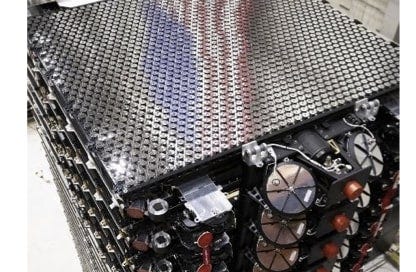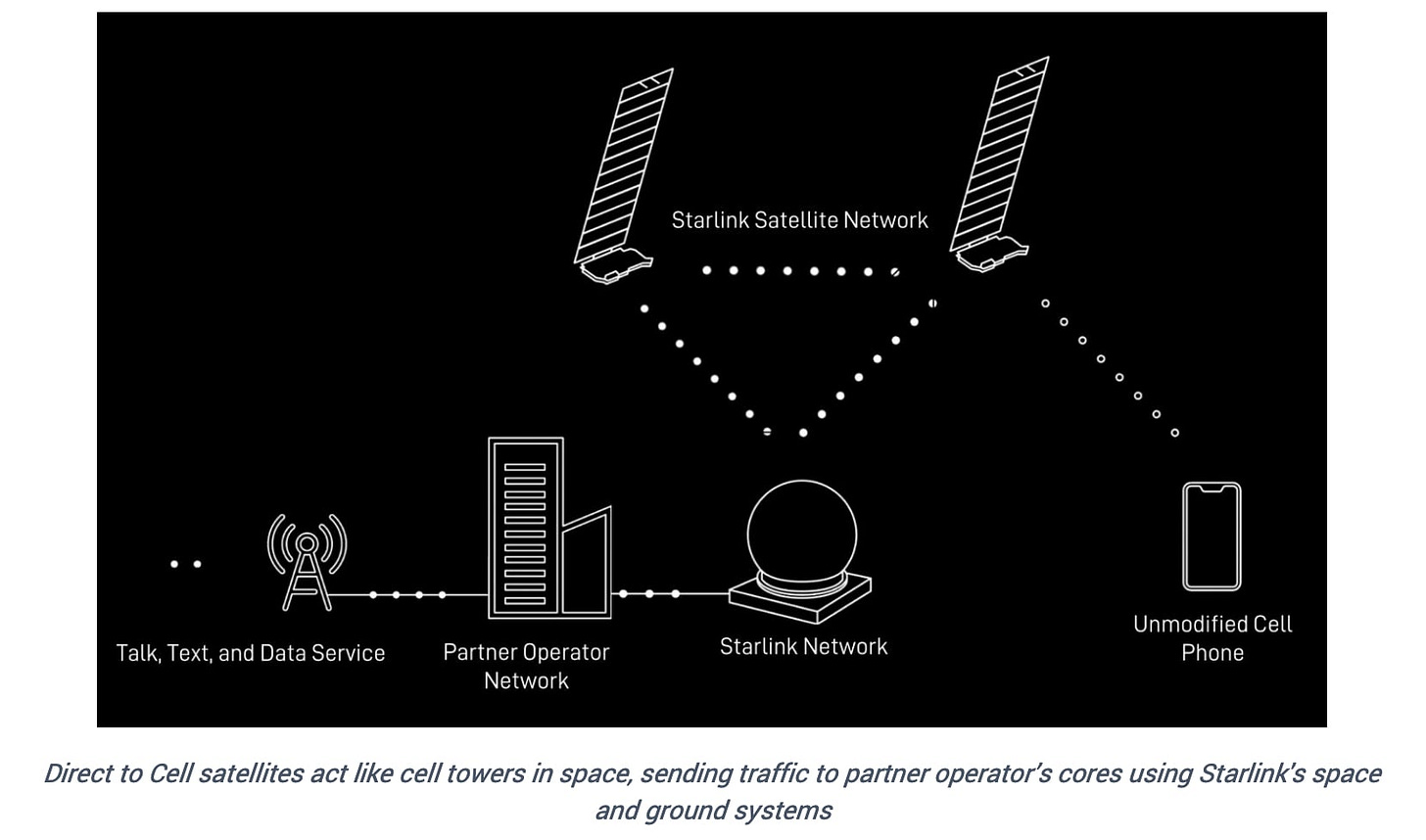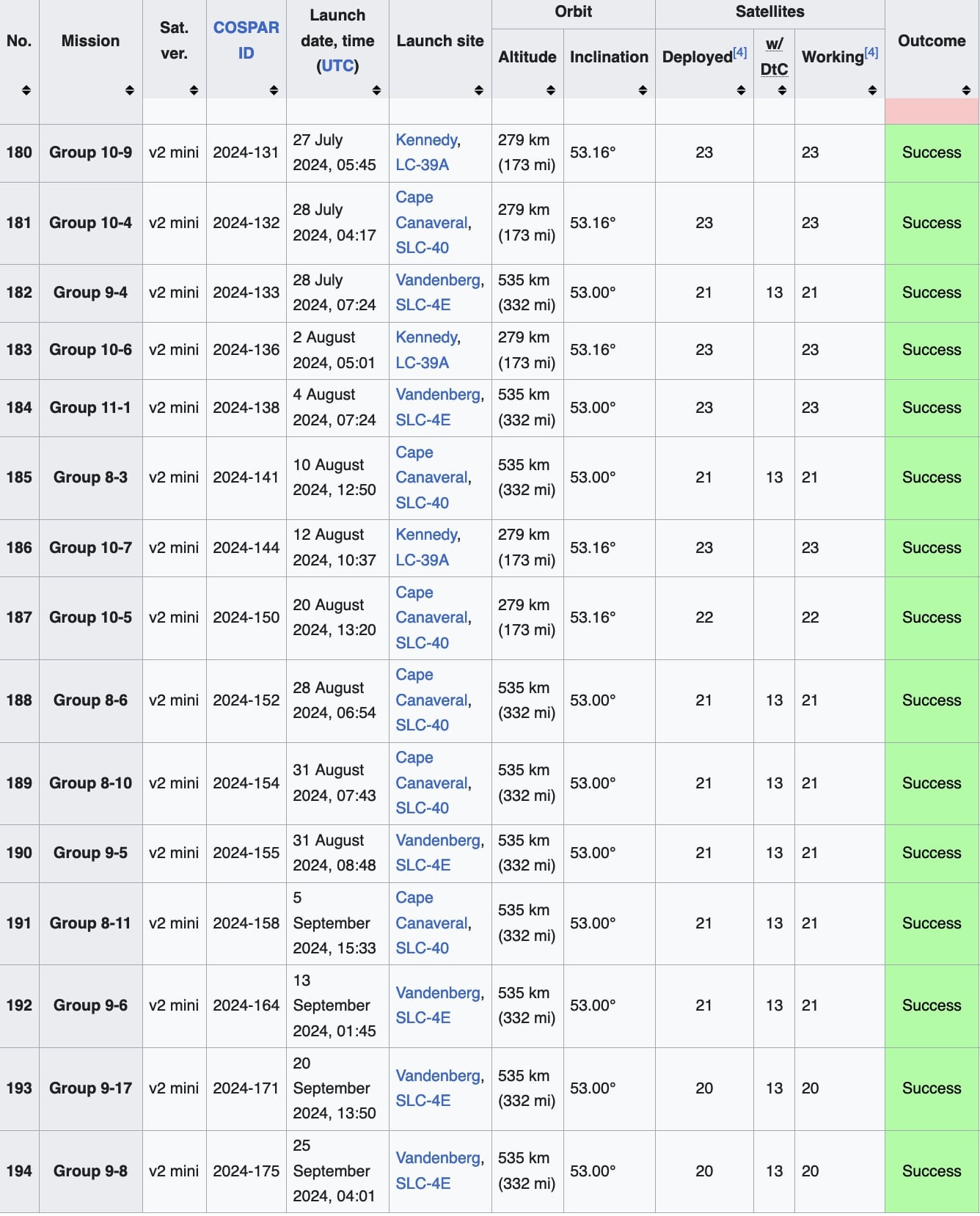SpaceX Starlink Has 227 Direct to Cellphone Capable Satellites
SpaceX had 17 launches with 13 direct to cellphone enabled version 2 mini Starlink satellites and 6 in the initial launch in April, 2024. This is being activated in North Carolina and Georgia where communications have failed in many areas due to the hurricane. This will likely be activated in Florida late this week while and after hurricane Milton hits.
Limited SMS cell service began working for a lot of people (October 5, 6 2025) thanks to activation of Sat to cell by Starlink, good on 3 networks. T-Mobile, Verizon and AT&T. FCC approved October 4. Starlink already activated network.
Each Starlink satellite with direct to cellphone capability can handle thousands of simultaneous text messages hundreds of voice calls.
The Direct to Cell network leverages the infrastructure they have built for Starlink over the past several years. Direct to Cell satellites plug into the existing Starlink satellite constellation via laser backhaul; meaning even our early satellites can provide services anywhere with regulatory approvals without requiring dedicated ground infrastructure. They also leverage all the existing networking, ground stations, and Points of Presence (PoPs) Starlink has developed. The Direct to Cell data travels over Starlink’s core directly to the operator’s core, providing a seamless integration.
In August 2022, SpaceX announced the first partnership with T-Mobile, and have since announced deals with Rogers in Canada, Optus in Australia, One New Zealand, KDDI in Japan, Salt in Switzerland, and Entel in Chile & Peru. The operators provide critical LTE spectrum in the 1.6-2.7 GHz range that we use to transmit our satellite signals.
The first challenge is transmitting sufficiently strong radio signals to and from cell phones that were not designed to connect to satellites, with very low gain antennas and transmit power (max 0.2 Watts). SpaceX developed custom silicon onboard the satellite that is optimized for this application and reduces power and cost on the satellite. They also developed large 2.7 meter x 2.3 meter advanced phased arrays that use extremely sensitive radio receivers and high-powered transmitters for communicating with cell phones from space. The antennas were designed to ride on the Starlink v2mini satellites and are reliably launched and deployed to low-Earth orbit every few days by the Falcon 9 rocket.
Keep reading with a 7-day free trial
Subscribe to next BIG future to keep reading this post and get 7 days of free access to the full post archives.






